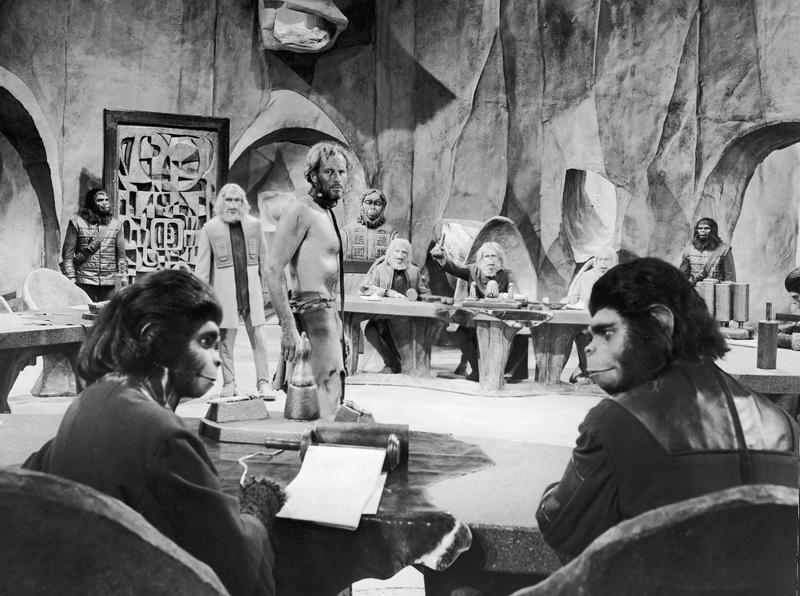“Planet of the Apes” - 1968
By | January 15, 2018

Up until the late 1960s, science fiction films were widely regarded as being a somewhat rudimentary genre. They had a reputation for being low budget garbage. Science fiction films tended to distance themselves from reality and could be extremely farfetched. Notwithstanding that, science fiction had a loyal fan base.

In addition to the somewhat negative stigma associated with early science fiction films, producers faced many other challenges. As you know, technology and special effects have come a long way since that time. Because resources in those areas were much less sophisticated, science fiction films usually ended up being a little insulting to the intelligence of audiences; The Blob, for example. Occasionally, a decent film would materialize but that wasn’t the norm.

When the Planet of the Apes was released in 1968, it was one of the films that turned out to be a turning point for the genre. The film made its mark and demonstrated to audiences that science fiction, not only had fictional value but could also be thought provoking. It was also shown to be extremely profitable. People began to sit up and take notice.

In a nutshell, Planet of the Apes chronicled the destiny of a group of astronauts whose spaceship crash landed in the middle of a lake on an unknown planet. The astronauts had been in a deep hibernation because of the projected length of their space voyage. When they landed, they were in the year 3978, but because they were traveling at the sound of light, it seemed much shorter. When they awoke to discover their fate, they had only aged 18 months. Sadly, the one and only female astronaut had not survived the crash.
Not yet knowing the full depth of the situation, they began exploring. The astronauts inflated their life raft and abandoned the spaceship. They tested the soil and discovered that it was not capable of sustaining life. They would have to set out, on what appeared to be a desolate wasteland, to find a way for survival after their provisions were gone. Without life-sustaining food and water, they would all perish.

Eventually, the group found water and plant life. Despite this good fortune, they would soon find themselves in the middle of something they could have never forseen. The strange and eerie planet they had been marooned on proved to be out of whack in terms of human evolution. The planet was ruled by apes and the humans were painfully primitive and lacked any social skills. After letting their guard down, the astronauts were taken advantage of by the savage humans. Their clothing and other provisions were either stolen or destroyed. The disturbing hierarchy of the planet lead to a whole myriad of other problems as well.

A lot of careful thought and planning went into the making of Planet of the Apes. As you can imagine, make-up was of great importance and concern. The costumes and make-up went a long way in the success of the film. A popular school of thought was that it would be a huge flop. The make-up was actually the clincher for 20th Century Fox to take on the project. Up to 100 make-up artists were used at any given time and it took up to 6 hours to complete just one actor's make-up. Some scenes had up to 200 apes at one time.

The ending was somewhat of collaboration between the producer and the director. Another ending had previously been planned. After putting so much sweat equity into the film, they wanted it to be just right. In the end, the producer, after much brainstorming, came up with the idea for the ending after catching a glimpse of painting of the Statue of Liberty in a deli while having lunch. Audiences were floored when it was revealed that all of the trials and tribulations had taken place on planet, Earth, in a post-apocalyptic setting.
After this groundbreaking project, Planet of the Apes had proven to have been a key part of furthering the genre of science fiction, much to the delight of today’s many fans.
